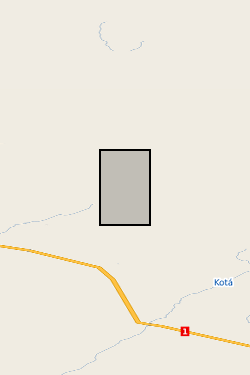Weather
Type of resources
Topics
Keywords
Contact for the resource
Provided by
Years
Formats
Representation types
Update frequencies
-
This dataset contains meteorological observations taken from 72 locations around Great Britain, Ireland and Europe published in the 1900-1910 Met Office Daily Weather Reports (DWRs). These records were produced as part of the Operation Weather Rescue project. Twice daily observations of mean sea level pressure and dry bulb temperature, along with daily wet bulb, maximum and minimum temperatures and total rainfall, were sent to the Met Office via telegraph for publication the DWRs. Some of the locations cover the entire 11 year period whereas others stopped reporting and may have been replaced by another location, and some locations were included in the DWRs from a later date. Additional observations of mean sea level pressure, dry bulb temperature and wet bulb temperature at 2pm are included for 1900 but these observations were no longer included in the DWRs after 1900. From November 1908 the German stations replaced wet bulb temperature with relative humidity. The data is stored in two formats: in daily csv files with observations for each station and in Station Exchange Format (SEF) files for each station in separate variables. SEF is a human-readable text format saved as .tsv (tab separated values). In the csv files units are inches of mercury (inHg) for mean sea level pressure, degrees Fahrenheit (F) for all temperature variables, inches for rainfall and percent (%) for relative humidity. In the SEF files the units are hectopascals (hPa) for mean sea level pressure, degrees Celsius (C) for all temperature variables, millimetres (mm) for rainfall and percent for relative humidity.
-

This dataset presents meteorological records from 3 weather stations around a glacier in southeast Iceland from 2009-2020. The weather stations were installed as part of British Geological Survey’s Glacier Observatory project, and were positioned at different altitudes close to the ice to record glacier weather. The data is in text format, and records key meteorological parameters including temperature, relative humidity, atmospheric pressure, precipitation, wind speed and direction, and solar irradiance. The weather stations were placed around Virkisjökull-Falljökull, an outlet glacier of the Öraefajökull ice cap in south east Iceland (AWS1 at 16°48'19"W, 63°57'53"N; AWS3 at 16°47'5"W, 63°58'13"N, and AWS4 at 16°48'7"W , 63°59'52"N). AWS1 was installed in September 2009, with AWS3 installed in September 2010, and AWS4 in September 2011. AWS3 and AWS4 were decommissioned in August 2018, and AWS1 in May 2020. AWS1 was located 100m from the current glacier margin at 156m a.s.l.; AWS3 sat 50m from the icefall at 444m a.s.l.; and AWS4 was situated on a clifftop overlooking the glacier at 858m a.s.l., close to the Equilibrium Line Altitude of the glacier. These were positioned at different altitudes to determine changes in weather parameters with height, thus producing for example, temperature or humidity gradients. The three stations were wirelessly linked, allowing data from the upper stations to be offloaded to the datalogger on the lower station. On-site downloads were completed using Campbell Scientific LoggerNet 4.x series software. AWS1 maintained mobile phone telemetry enabling automatic remote downloads of data from all stations on a daily basis, and remote access for software updates and health checks. Each AWS supported a slightly different sensor array, depending on the requirements of the site, and were mounted on 1.5m Campbell Scientific tripods. All of the stations were designed around a Campbell Scientific CR800 datalogger, and were solar powered, using combinations of PV panels up to 100W, supplying a Campbell Scientific 25Ah battery mounted on the tripod, plus a 110Ah gel cell battery back up in a separate housing. The data will be of use to researchers and students interested in the weather of southeast Iceland, glacier climate, local influence of glaciers on more regional synoptic weather systems, glacier climate modellers, glacier hydrologists and hydrogeologists. The BGS project was led and coordinated by Dr Jez Everest, technical support and implementation by Heiko Buxel and data Quality Assurance and checking by Dr Jon Mackay. Any periods where equipment malfunction, testing or replacement meant that no or unreliable data were collected are indicated by a ‘NAN’ value in the datasets.
-
This dataset contains meteorological observations taken from Ben Nevis and Fort William (1883 -1904). These records were produced as part of the Operation Weather Rescue project. Between 1883 and 1904, detailed meteorological observations were taken at the summit of Ben Nevis (56.80N, 5.00W, 1345m elevation) and in the town of Fort William (56.81N, 5.12W, 13m elevation). Hourly observations include temperature (both wet and dry bulb), rainfall, atmospheric pressure at both locations. Daily observations include minimum and maximum temperatures and rainfall. Additional observations taken at Fort William School during the same period are also included. Units are Celsius for temperature, mm for rainfall and mb for pressure. V2 is the latest version.
 NERC Data Catalogue Service
NERC Data Catalogue Service